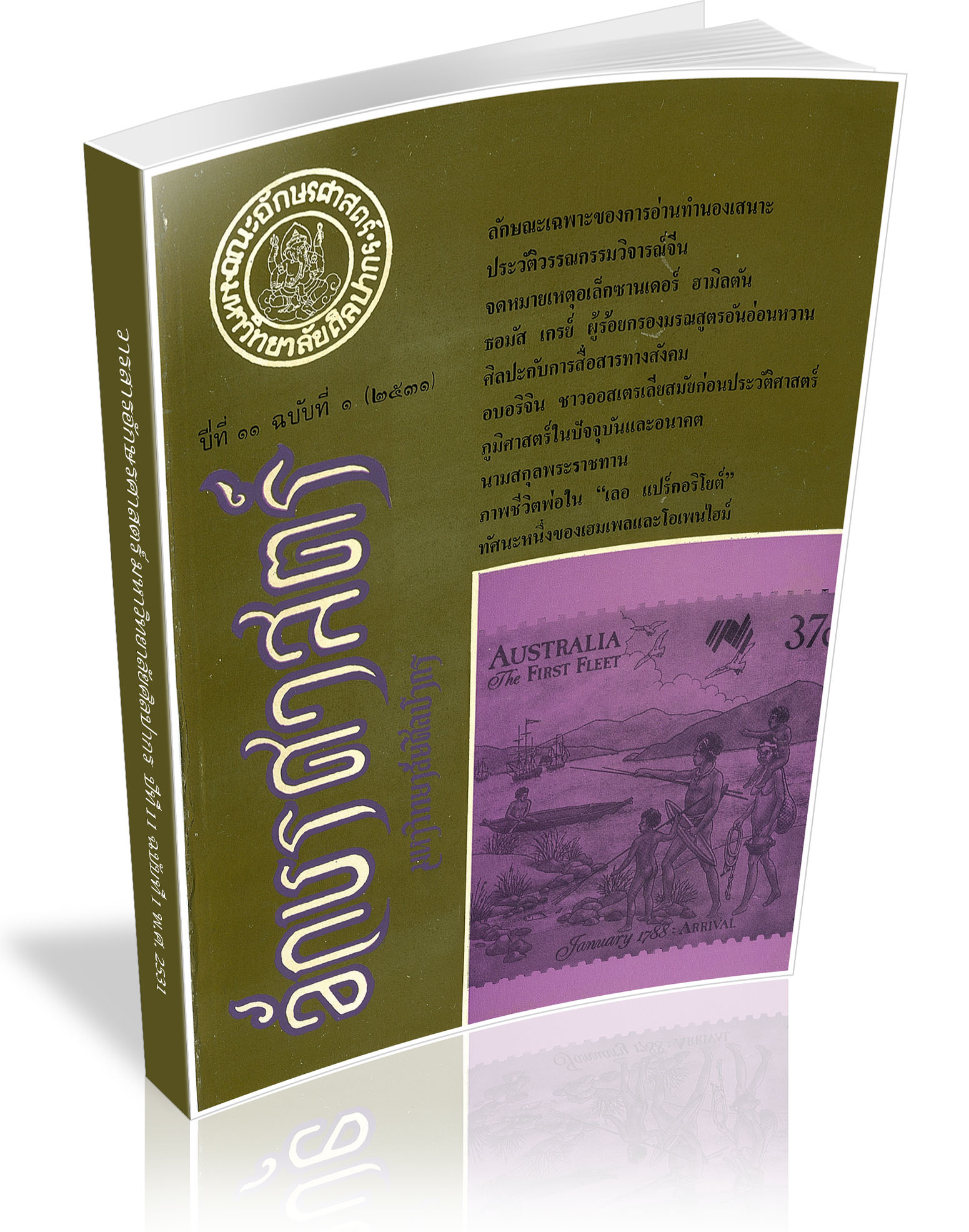The Characteristics of Thai Verse Chanting
Keywords:
การอ่านทำนองเสนาะAbstract
The present research-study is aimed at examining the historical development, the characteristics, the basic principles and the art of Thai verse chanting, distinquishing it from other types of verse recitation. It aiso takes into consideration the views of literary scholars and other interested persons related to verse chanting and sets as its objective the dissemination of the proper methods of verse chanting which should benefit educational institutions and the general public. It is hoped that in this way the art of verse chanting can be preserved and propagated, a testimony to the cultural riches of the Thai nation.
The research reveals that verse chanting most probably originated in the early Ayuthya period, taking the form of recitation that enhances the melodic and rythmic lines of such verse forms as khlong, chan, kap, khlon and rai, which, strictly speaking, are distinct from singing, which, in its own way, is meant to be distinquishable from normal prose recitation. A performer of verse chanting must be conversant with the prosody, rythm, melodic line of the piece; he must have a clear enunciation, know how to infuse feeling into the piece and make great efforts in developing his own style that can create an emotional impact on his listeners. As for the views of literary scholars and other interested persons, the majority shares the opinion that it is at present necessary to promote the art of verse chanting within the framework of the study of Thai literature. This is because verse chanting can greatly contribute towards the study and the propagation of literature, for in this way, the literary work can be impressed upon the mind of the learner who will at the same time appreciate the value of, and take pleasure in, literature. With regard to the future trend in verse chanting, this may depart somewhat from the traditional forms. The researcher intends to preserve examples
of model verse chanting by means of Western notation so that those interested in the art, both Thai and foreign, can derive bencfit from them. Verse chanting can in this way acquire greater popularity and universal appeal. Recordings have also been made of all types of verse chanting known to the researcher as well as other forms of verse recitation so that the characteristics of verse chanting can be brought to the fore.
Downloads
References
จุลจอมเกล้าเจ้าอยู่หัว, พระบาทสมเด็จพระ พระราชกรัณยานุสร พิมพ์ครั้งที่ ๖. พระนคร : สำนัก พิมพ์กลังวิทยา, ๒๕๐๗.
ดำรงราชานุภาพ, สมเด็จพระเจ้าบรมวงศ์เธอ กรมพระยา. กาพย์มหาชาติ พิมพ์ครั้งที่ ๓. พระนคร : กรมศิลปากร, ๒๕๐๗.
นันทา ขุนภักดี การวิเคราะห์ความเชื่อของชายไทยในสวัสดิรักษา นครปรูม : แผนกห้องสมุดฯ สำนักงานอธิการบดี มหาวิทยาศิลปากร, ๒๕๒๗.
เปลื้อง ณ นคร คำบรรยายภาษาไทยขั้นสูงของชุมนุมภาษาไทยของคุรุสกา. พระนคร : คุรุสภา,๒๕๑๗.
Downloads
Published
How to Cite
Issue
Section
License
ผู้เขียนบทความต้องยินยอมในข้อกำหนดต่าง ๆ ของวารสารก่อนส่งบทความตีพิมพ์




